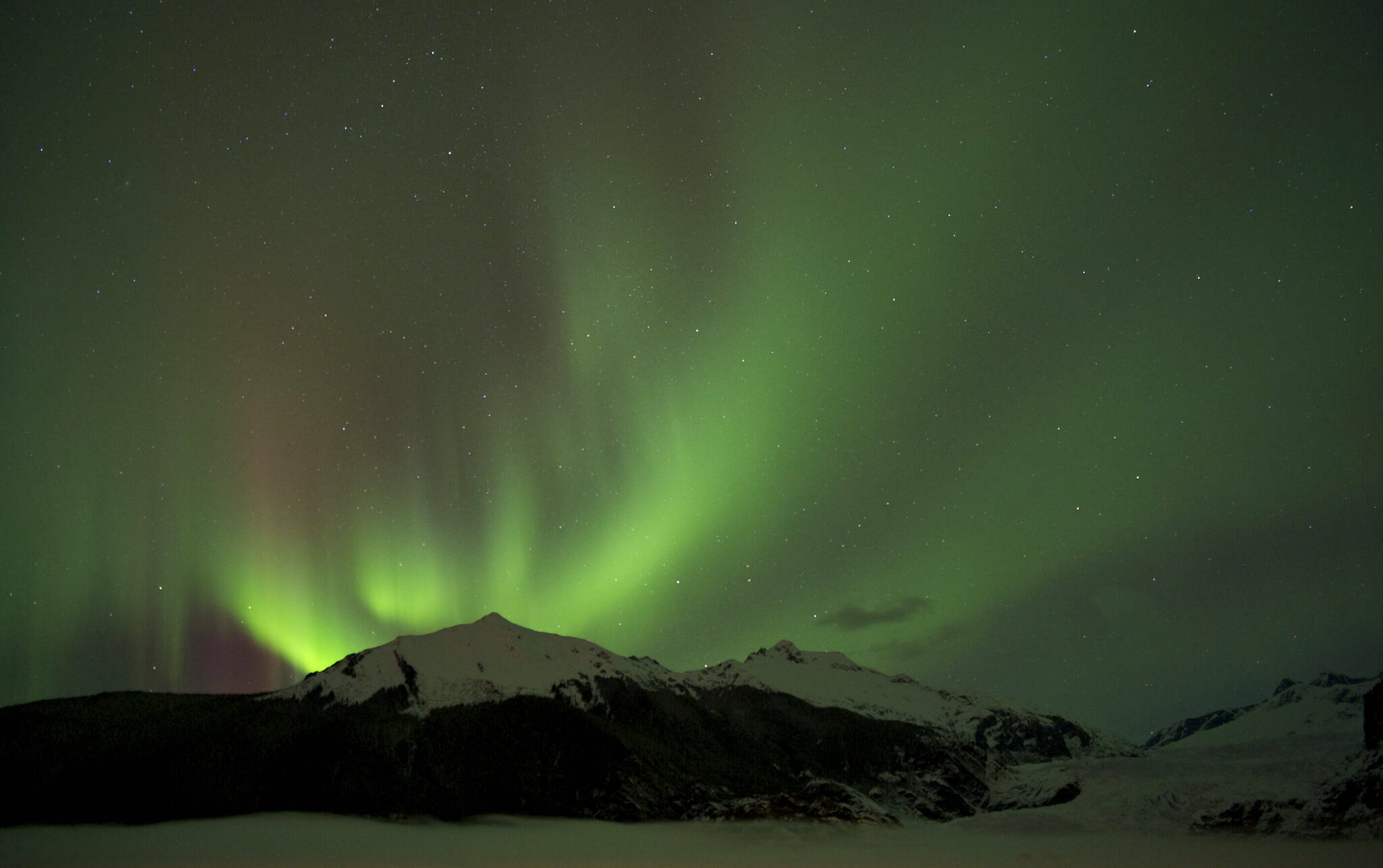The skies are again lighting up with the colors of the aurora borealis, evidenced with plentiful images on social media and “high activity” predictions from scientists as the long nights set in.
University of Alaska Fairbanks’ Geophysical Institute scientists measure aurora strength via a scale known as the Kp-index, which ranges from 0-9. Kp-1 would be “very weak,” where Kp-9 would be a major geomatic storm.
Alaska has seen a lot of 4-6s in recent weeks, and anything above a Kp5 is a geomatic storm.
Geomatic storms are disturbances in the Earth’s magnetosphere, described as a “very efficient exchange of energy” between the space surrounding Earth and solar winds, according to the National Oceanic and Atmospheric Administration (NOAA). Particles stirred up by the storm interact with gas in the atmosphere, creating the phenomenon.
The poles are where the northern lights usually occur, while the storms produce stronger lights and space weather expands it farther out where more people see it.
Assuming there is no cloud cover, which is the biggest challenge to seeing the lights in Juneau. Next to the timing of the lights, which often occur late or even in the middle of the night.
The forecasts for the week of Nov. 6 are courtesy of the University of Alaska Fairbanks’ Geophysical Institute and available online, along with more data, at www.gi.alaska.edu/monitors/aurora-forecast. The listings below will be updated and published weekly until next spring.
Monday, Nov. 6
Forecast: Auroral activity will be high(+). Weather permitting, highly active auroral displays will be visible overhead from Utqiaġvik to as far south as Kodiak and King Salmon. Moon phase: Last Quarter.
Tuesday, Nov. 7
Forecast: Auroral activity will be active. Weather permitting, active auroral displays will be visible overhead from Utqiaġvik to Anchorage and Juneau, and visible low on the horizon from King Salmon and Prince Rupert. Moon phase: Last Quarter.
Wednesday, Nov. 8
Auroral activity will be active. Weather permitting, active auroral displays will be visible overhead from Utqiaġvik to Anchorage and Juneau, and visible low on the horizon from King Salmon and Prince Rupert. Moon phase: Last Quarter.
Thursday, Nov. 9
Auroral activity will be active. Weather permitting, active auroral displays will be visible overhead from Utqiaġvik to Anchorage and Juneau, and visible low on the horizon from King Salmon and Prince Rupert. Moon phase: Last Quarter.
Friday, Nov. 10
Auroral activity will be moderate. Weather permitting, moderate displays will be visible overhead from Utqiaġvik to as far south as Talkeetna and visible low on the horizon as far south as Bethel, Soldotna and Southeast Alaska. Moon Phase: Waning Crescent
Saturday, Nov. 11
Auroral activity will be moderate. Weather permitting, moderate displays will be visible overhead from Utqiaġvik to as far south as Talkeetna and visible low on the horizon as far south as Bethel, Soldotna and Southeast Alaska. Moon Phase: Waning Crescent
Sunday, Nov. 12
Auroral activity will be low. Weather permitting, low-level displays will be visible overhead from Utqiaġvik to Fairbanks and visible low on the northern horizon from as far south as Anchorage and Juneau. Moon phase: Waning Crescent
• Contact Meredith Jordan at meredith.jordan@juneauempire.com or (907) 615-3190.

